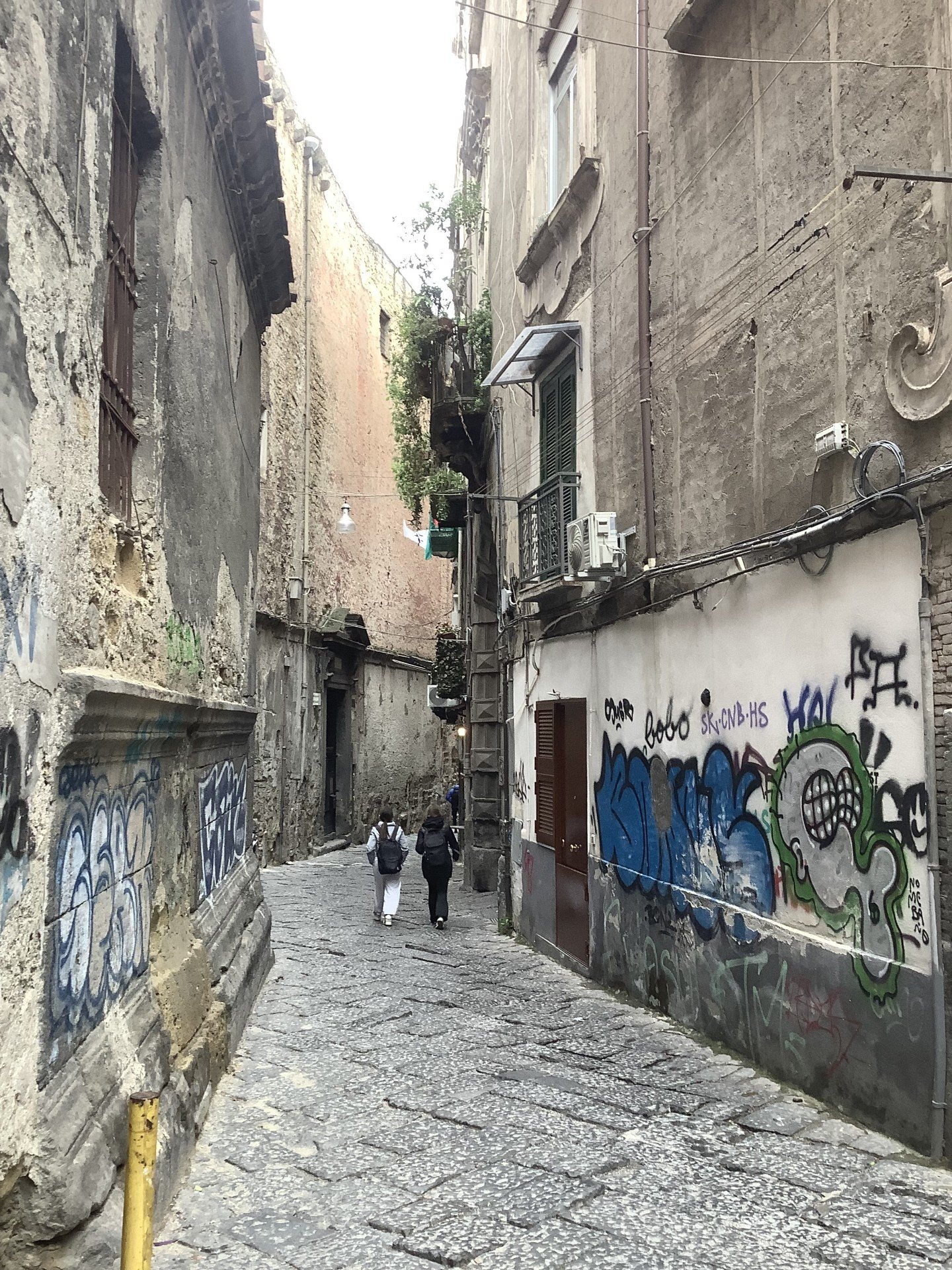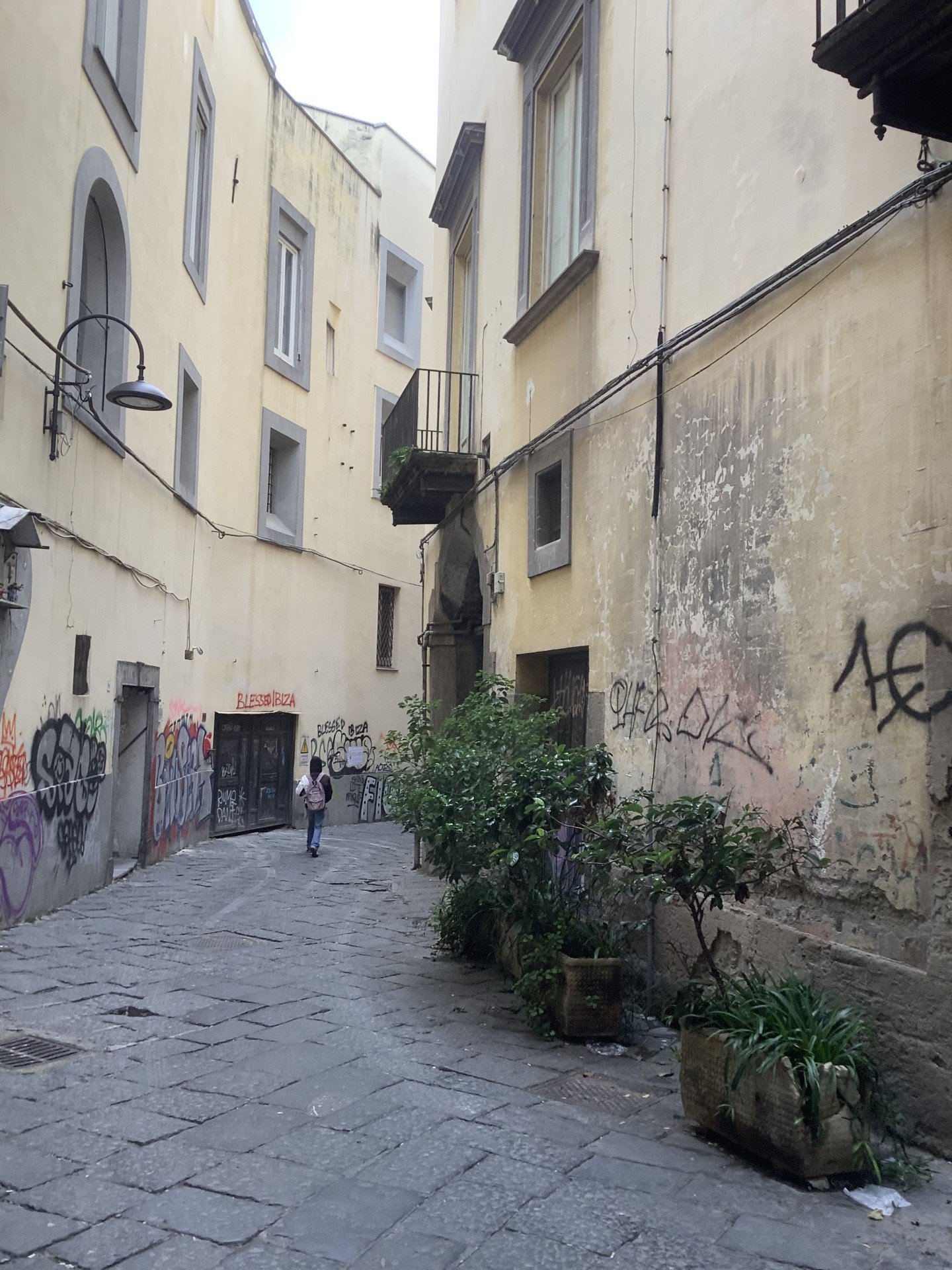XXXIV Naples (Neapolis)
What3words – bunkers.powerful.known
Construction -
Capacity -
Visited January 2025
Status – Visible in the street pattern. Underground remains can possibly be seen on organised ‘below Naples’ guided tours.
Above - Amphitheatre and Theatre outlined in the street pattern of Naples.
Left - Photograph from the Napoliunderground urban explorers.
If you put ‘Naples Amphitheatre’ into a search engine you will almost certainly be directed to the Flavian Amphitheatre of nearby Pozzuoli. This is not the whole truth. Central Naples has its very own Roman amphitheatre, and a theatre, both located on the Capodinapoli hill, elsewhere referred to as the ‘Ancient Acropolis of Napoli’. At the top of this steep bluff stands the Church of S. Aniello a Caponapoli, dedicated to S. Agnello, or Aniello, bishop of Naples during the 6th century.
This is a mere discus throw from the National Archaeological Museum (Admission €20) which contains loads of spectacular statues, mosaics and frescoes from Nearby Pompeii and Herculaneum, artifacts too precious and delicate to be exposed to the elements (natural or criminal) on the sites themselves. One of these, from the house of Actius Anicetus, depicts the infamous Pompeii amphitheatre riot of AD59.
Whether through seismic activity or relentless urbanisation, the ground level of the Naples Amphitheatre is anywhere between 8 and 12 metres below that of the present day streets. When visiting the site you have a steep climb if approaching from the north and west. Strada Pisanelli, Via San Paolo and Vico Purgatorio Ad Arco have bulging curves, unlike the surrounding grid of straight lanes. These curves are founded on the outer walls of the buried amphitheatre. The Vico San Pellegrino takes you right to the centre of the arena location. A short distance to the east, some of the adjacent theatre is visible to the open sky and can be glimpsed on satellite photos if the sun is not too low and casting a shadow over it. The popular underground tours of passages, caves and cisterns beneath this part of the city claim to include parts of the amphitheatre in the basement of a residential flat. Given the tendency to conflate amphitheatres with theatres I can’t be absolutely sure this is the case, but will investigate next time I’m there.
Some Italian urban explorers operated a (now defunct) website under the moniker NUG (Napoliunderground) which published the following in a report dating from March 2008:
“The conference room at Naples' famed National Archeological Museum was packed, with standing room only spilling out into the hallway as a conference got underway, reviewing work in progress on a major archaeological project beneath the ancient original Greco-Roman streets in the city's historic centre. Archaeologists and scientists have been working on an ongoing project to restore a huge Roman Colosseum or Amphitheatre buried some 10 to 12 metres beneath today's bustling narrow alleyways and piazzas of the old city. Napoliunderground was represented by Fulvio and Ipogeo, who were were special guests, having been asked to prepare a photographic overview, as well as a Ipogeo's video tour of the area where the difficult work in the huge underground area is taking place. The conference was organized by architect Giancarlo Ferulano, of the City's metropolitan historic valuation department to present new discoveries from this major find which dates from the I and II centuries A.D.”






